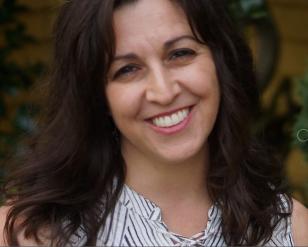Gina Baleria, Sonoma State University – Digital Literacy
 Digital literacy skills suddenly have become very important to learning.
Digital literacy skills suddenly have become very important to learning.
Gina Baleria, assistant professor in the department of communication and media studies at Sonoma State University, examines how these skills can bring belonging to students who aren’t together.
Gina Baleria, Ed.D., is an Assistant Professor of Journalism, Media Writing, & Digital Media in the Department of Communication & Media Studies at Sonoma State University. She earned her Ed.D. in Educational Leadership from San Francisco State University; her Master’s in Communication: Media Studies from Stanford University; and her Bachelor’s in English with emphases in Film & History from UCLA. Prior to becoming a professor, Gina was an award-winning broadcast & digital journalist at stations including KCBS Radio, KGO TV, & KGO Radio in San Francisco; and KXTV & KFBK in Sacramento. She serves on the boards of the Friends of the San Francisco Public Library and Theatre Bay Area. She also serves as a digital communications consultant for nonprofits focused on media literacy, engaging across difference, and improving public discourse and civic life.
Digital Literacy
Our students see their phones and tablets as portals to real spaces where they engage in relationships with teachers, co-worker, peers, friends, and family. This is even more true now… as students struggle to make connections and stay engaged during the remote learning brought on by the COVID-19 pandemic.
In addition, many students have not been taught the digital media literacy skills needed to navigate digital spaces, assess and decipher messages, and communicate in ways that are productive, respectful, and empathetic. This can make students feel they don’t belong… and cause them to discontinue their studies.
Our national discourse is not helping. Differences have grown into deep divisions across countless parameters, including party, ethnicity, race, gender, religion, and region. These divides can lead us to marginalize and OTHER those who are different, impairing our ability to work together to solve community problems.
To address these challenges, I created a digital video engagement space called Mismatch.org… where students could share and listen to stories with someone who’s different in one or more socially salient ways. The goal was to explore how this type of semi-structured micro-intervention influenced belonging and curiosity.
Why belonging & curiosity? When students feel as if they belong, as if they’re a part of something, they stay engaged, and so increasing a sense of belonging can help students persist to graduation. As for curiosity, when students are curious about each other, they may want to learn more, potentially then letting go of stereotypes and seeing others as fully formed people.
My research found that students did become more curious about each other… they DID feel a greater sense of belonging… and they found commonality – helping them SEE their other as a person.
Mismatch has now evolved… and it’s one of many tools out there to help students share and listen to stores… improve digital media literacy skills… and increase belonging and curiosity.


